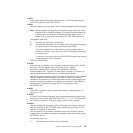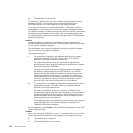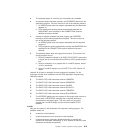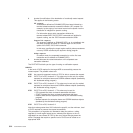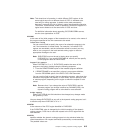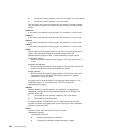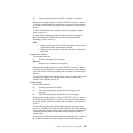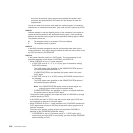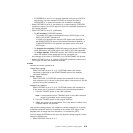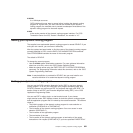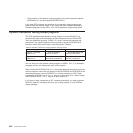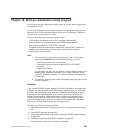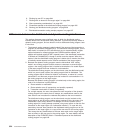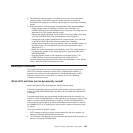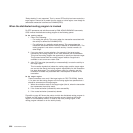– If DYRERROR is set to ‘2’ (no session available) and you want CICS to
retry routing, you must change DYRSYSID or change the value of
DYRQUEUE to ‘Y’ (queue the request until a session is available).
v When DYRFUNC is set to ‘2’ (termination of a routed request), DYRSYSID
contains the name of the CICS region on which the completed transaction or
link request executed.
v When DYRFUNC is set to ‘3’ (notification):
– For ATI requests, DYRSYSID contains:
- The remote CICS region name specified on the SYSID option of the
EXEC CICS START command, or
- If SYSID is not specified, the remote CICS region name specified on
the REMOTESYSTEM option of the installed transaction definition, or
- If REMOTESYSTEM is not specified, the system name of the local
CICS region.
– For program-link requests, DYRSYSID contains the remote CICS region
name specified on the SYSID option of the EXEC CICS LINK command.
– For bridge requests, DYRSYSID contains the SYSID of the CICS region
where the request will be routed and the user transaction run.
Any changes to the value of DYRSYSID, or to DYRNETNAME, are ignored.
v When DYRFUNC is set to ‘4’ (abend), DYRSYSID contains the name of the
CICS region on which the transaction abended.
DYRTRAN
contains the remote transaction id.
Transaction routing
When DYRFUNC is set to ‘0’ or ‘3’, DYRTRAN contains the remote
transaction id specified on the REMOTENAME option of the installed
transaction definition.
bridge requests
When DYRTYPE =8, DYRTRAN contains the transaction id of the target
user transaction as it is known in the current region. Note that this is not the
same as the current transaction id.
Program-link requests
When DYRFUNC is set to ‘0’ or ‘3’, DYRTRAN contains the transaction id
of the remote mirror transaction, obtained using the following sequence:
1. From the TRANSID option on the LINK command.
Note: A value specified on the TRANSID option of the LINK command
cannot be overridden by the routing program.
2. From the TRANSID option on the program definition.
3. 'CSMI', the generic mirror transaction. This is the default if neither of the
TRANSID options are specified.
Your dynamic routing program can accept this remote transaction id, or supply
a different transaction name for forwarding to the remote CICS region. If the
supplied name is longer than four characters, it is truncated by CICS.
You can change DYRTRAN on any call to the dynamic routing program, but the
change is effective only:
1. When DYRFUNC is set to ‘0’ or ‘1’.
Chapter 17. Writing a dynamic routing program 619



